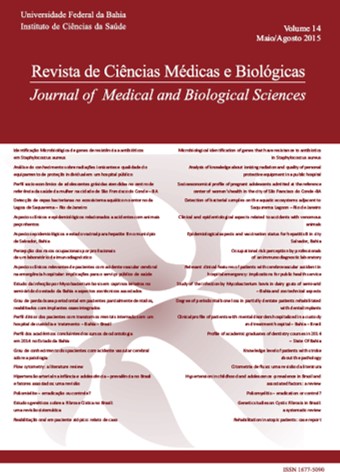Flow cytometry: a literature review
DOI :
https://doi.org/10.9771/cmbio.v14i2.12182Mots-clés :
Flow cytometry. Monoclonal antibodies. Fluorochromes.Résumé
Introduction: flow cytometry is a technique that employs an optical-electronic detection apparatus to analyze the physical and chemical properties of microscopic particles suspend in a liquid medium. Objective: to review the literature in search of the main studies that used flow cytometry as the main methodology. Method: Articles were selected according to their impact factor in the Journal of Citation Reports. Literature review: a light beam is direct to a continuous flow of suspended particles marked with fluorescent substances. The light is scattered differently from the beam by the particles and is captured by sensors in line and perpendicular to the light beam. These microscopic particles are conjugated with fluorescent substances that, once excited, emit light of lower frequency than the light source. The emitted light is captured by sensors and the particles are analyzed according to fluctuations in brightness of each detector and/or fluorescence emission. The result of this process is the formation of images in real time for each cell fluorescence, scattering and transmission of light. A major problem of flow cytometry is to determine whether a subset of cells labeled with fluorochrome-conjugated monoclonal antibodies is positive or negative. Gains compensation should be determined and applied correctly, and controls should be conducted concisely with the adoption of a biological control, isotype control or Fluorescence Minus One (FMO). None of these controls are considered ideal, and must be chosen according the number of different labeling done, rarity of molecule expression on surface or intracellularly in certain cell subsets, overlap of wavelengths or unspecific binding of the fluorochrome-conjugated antibodies. Conclusion: due to its great potential, flow cytometry has been expanded to diverse fields of biological sciences, and is routinely used in clinical diagnostic, biotechnology, and basic and applied research.Téléchargements
Les données relatives au téléchargement ne sont pas encore disponibles.
Téléchargements
Publiée
2015-02-18
Comment citer
Errante, P. R., Ebbing, P. C. C., Rodrigues, F. S. M., Ferraz, R. R. N., & da Silva, N. P. (2015). Flow cytometry: a literature review. Revista De Ciências Médicas E Biológicas, 14(2), 211–224. https://doi.org/10.9771/cmbio.v14i2.12182
Numéro
Rubrique
Artigos de revisão
Licence
A Revista de Ciências Médicas e Biológicas reserva-se todos os direitos autorais dos trabalhos publicados, inclusive de tradução, permitindo, entretanto, a sua posterior reprodução como transcrição, com a devida citação de fonte. O periódico tem acesso livre e gratuito.






